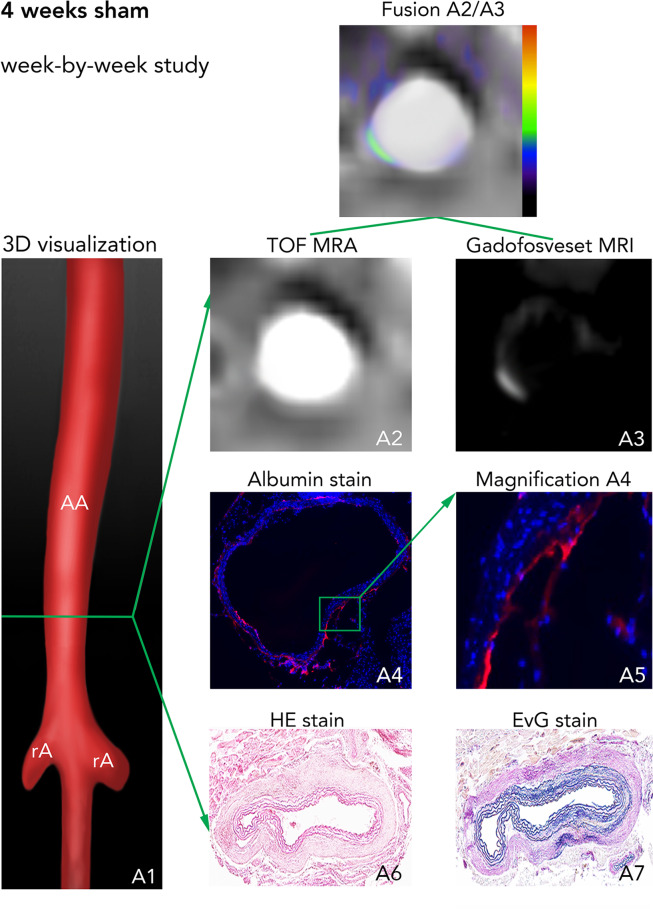Figure 2.
In vivo MRI with an albumin-binding probe and ex vivo assessment in sham animals. (A1) 3D visualization showing the suprarenal abdominal aorta (AA) with the renal arteries (rA) of a male ApoE−/− mouse after 4 weeks of saline infusion. The green line indicates the orientation of subsequently acquired transverse MRI sequences and the corresponding histological sections. (A2) Time-of-flight angiography of the AA. (A3) Delayed-enhancement imaging after administration of the albumin-binding probe gadofosveset. Fusion A2/A3 shows a fusion of images A2 and A3 for better visualization of in vivo results. A4-A7 are images of ex vivo histology. A4 and its corresponding magnification A5 show an albumin-specific staining with only minor immunopositive fluorescent areas of albumin. A6 corresponds to a Hematoxylin and Eosin (H&E) staining of the aortic tissue and A7 shows an Elastica van Gieson (EvG) staining of elastic fibers. In summary, we see, that no pathological changes of the aortic wall can be observed in vivo based on delayed-enhancement imaging with the albumin-binding probe gadofosveset (A3, A2/A3) or on corresponding ex vivo histology (A4-7). Abbreviations: H&E: Hematoxylin and Eosin staining; EvG: Elastica van Gieson staining of elastic fibers; TOF-MRA: time-of-flight magnetic resonance angiography; AA: suprarenal abdominal aorta; RA: right renal artery; gadofosveset: albumin-binding probe. +: vascular lumen in arterial TOF.

